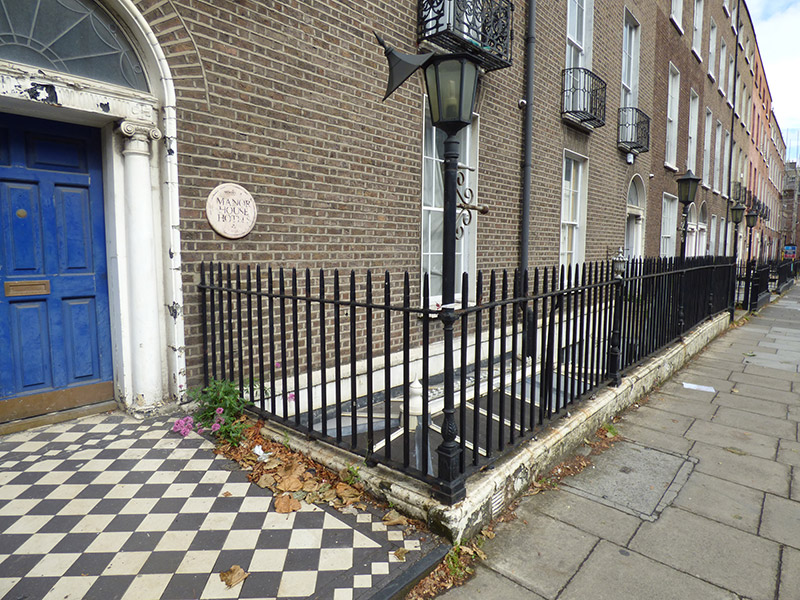Survey Data
Reg No
50100499
Rating
Regional
Categories of Special Interest
Architectural, Artistic
Original Use
House
Historical Use
Hotel
Date
1780 - 1800
Coordinates
316683, 233280
Date Recorded
28/07/2016
Date Updated
--/--/--
Description
Attached three-bay four-storey former house over basement, built c. 1790 as one of two (Nos. 9-10). Formerly in use as hotel, vacant at time of record (2016). Full-height flat-roofed returns to rear. M-profile pitched slate roof, having parapet with masonry coping and parapet gutters. Shouldered rendered chimneystacks to party walls with yellow clay pots; and shared cast-iron and replacement uPVC rainwater goods to north end. Flemish bond brown brick walling on painted masonry plinth over painted smooth rendered basement walling. Square-headed window openings, diminishing in height to upper floors, having patent reveals and painted masonry sills. Timber sliding sash windows, replacement six-over-six pane with convex horns to lower floors and three-over-three pane with ogee horns to top floor. Decorative cast-iron balconettes to first floor openings. Apparently timber sash windows to rear elevation. Elliptical-headed principal doorway with moulded render surround, painted masonry doorcase having cornice, fluted frieze with rosettes over Adamesque Ionic columns, leaded batwing fanlight and eight-panel raised-and-fielded timber door with brass furniture. Late nineteenth-century black and white tiled entrance platform with single painted masonry step to street, having basement areas to each side enclosed by wrought-iron railings with decorative cast-iron posts and later lamp standards on painted granite plinth. uPVC skylights to accommodation within basement areas.
Appraisal
No. 10 Fitzwilliam Street Lower is a late eighteenth-century house, built as part of the original laying out of the street, which began about 1780 in tandem with Merrion Square East and South. Paired with No. 9 to the north, the two are characterized by typically well-balanced Georgian proportions and are enhanced by decorative features, including the Adamesque capitals to the painted masonry doorcase, a leaded fanlight. The cast-iron balconettes and the ironwork of the setting features provide further decorative interest. The pair form part of a largely unified row lining the northwest side of a street that, together with Merrion Square East, constitutes the longest Georgian streetscape in Dublin.

















